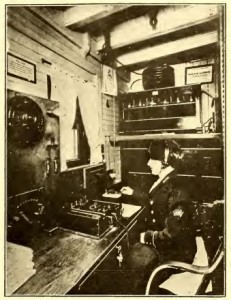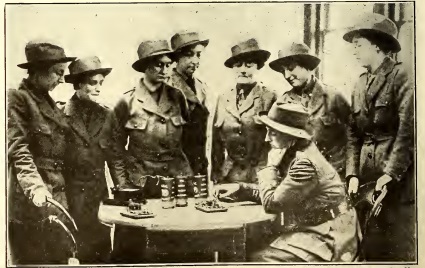
devoted a large portion of the magazine to “the Wireless Girl,” and featured on the cover this painting by George Wall. Loyal readers will recognize the painting as being based on a photograph of Kathleen Parkin, 6SO/6BP, of San Rafael, California. As we related in an earlier post, she built the quarter kilowatt transmitter shown here, along with a vacuum tube receiver, and had one of the more impressive stations on the West Coast.
In the Electrical Experimenter article, Miss Parkin writes of her interest in wireless:
With reference to my ideas about the wireless profession as a vocation or worthwhile hobby for women, I think wireless telegraphy is a most fascinating study, and one which could very easily be taken up by girls, as it is a great deal more interesting than the telephone and telegraph work, in which so many girls are now
employed. I am only fifteen, and I learned the code several years ago, by practising a few minutes each day on a buzzer. I studied a good deal and I found it quite easy to obtain my first grade commercial government license, last April.It seems to me that every one should at least know the code, as cases might easily arise of a ship in distress, where the operators might be incapacitated, and a knowledge of the code might be the means of saving the ship and the lives of the passengers. But
the interest in wireless does not end in the knowledge of the code.You can gradually learn to make all your own instruments, as I have done with my 1/4 kilowatt set.
There is always more ahead of you, as wireless telegraphy is still in its infancy.
Miss Parkin was not the only young woman at the forefront of radio, as the article cited a number of others. For example, Graynella Packer of Jacksonville, Florida, was the first woman wireless operator to serve on a commercial vessel, aboard the Mohawk of the Clyde Line, where she was in full charge of the vessel’s wireless.
Numerous other women radio operators were featured in the article, which stressed the role that wireless played in national preparedness. The photo below shows a group of young women studying wireless at a summer preparedness camp.


